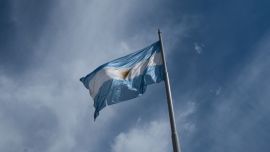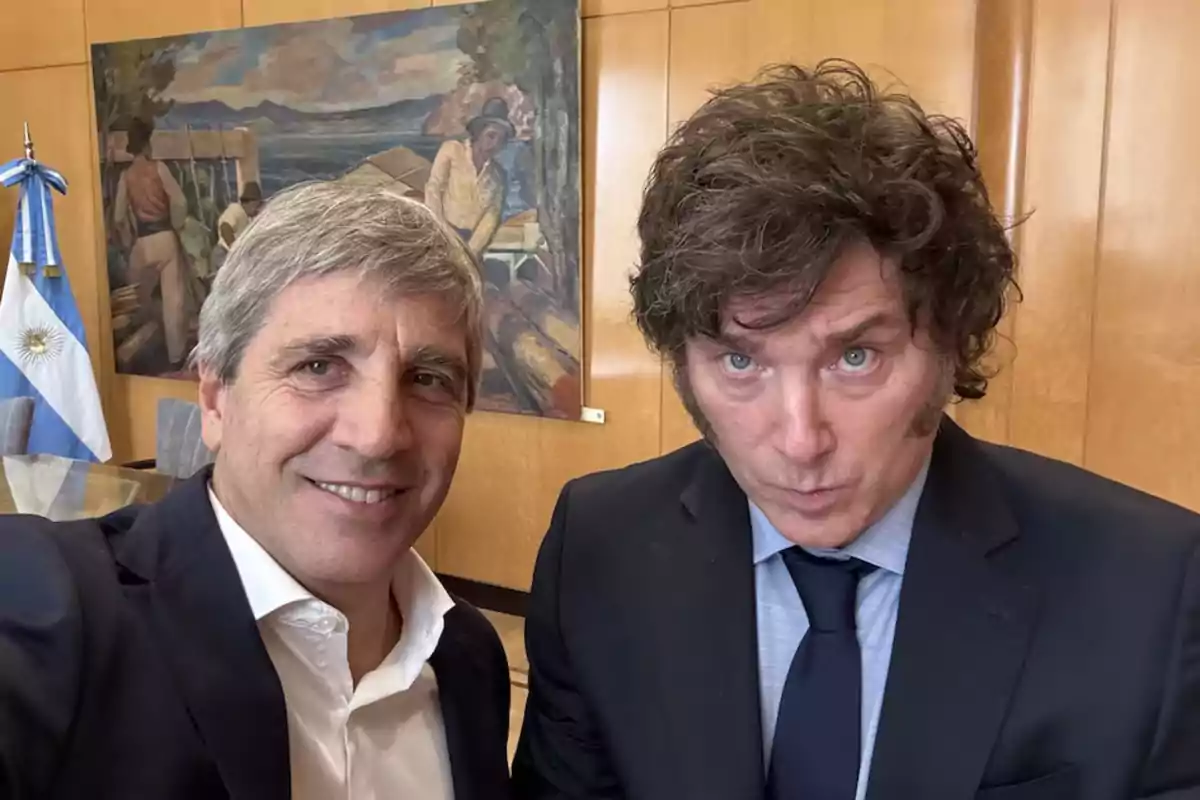Game-changer? Argentina launches tender for construction of enormous gas pipeline
President Alberto Fernández on Thursday launched a tender for construction of an enormous gas trunk pipeline beginning at Vaca Muerta gas field. What is the ‘Gasoducto Néstor Kirchner’ and why is it so important for Argentina?
Argentina's government on Thursday launched the tender for the construction phase of a gas pipeline megaproject that will eventually extend more than 1,000 kilometres (621 miles), running from southwest province of Neuquén to north of Buenos Aires.
If completed, the Gasoducto Néstor Kirchner, or Néstor Kirchner Pipeline, would be the largest natural gas project in Argentina in the last four decades.
Its aim is nothing less than the transformation of Argentina's fuel transport capacity for both domestic use and exports. Experts say it could make the country a major energy producer.
The project, however, will take some time, though it comes at a time when worldwide energy costs have shot up due to Russia's invasion of Ukraine. The tender will be launched in May, with a decision due in July. The first stage of the project is due to cost US$1.5 billion, beginning in August and ending in 2024.
In an official ceremony at the Complejo Loma Campana YPF site at the Vaca Muerta deposit in Neuquén Province, President Fernández celebrated "the start of work to create the Néstor Kirchner Pipeline."
"Gas is the transition energy that the world has decided to have in order to move towards renewable energies," he said, declaring that "Vaca muerta is more alive than ever.”
"Today there is a geopolitical situation that makes it possible for Argentina to accelerate the development of the energy sector. We face an opportunity that requires increasing infrastructure capacity, such as this pipeline," said Economy Minister Martin Guzman in a recorded message played at the event.
Fernández, addressing those gathered, said that Argentina needed the pipeline “as soon as possible.”
Symbolic – and huge
The first section of the Gasducto Néstor Kirchner, named after the late former president who preceded his wife in office, will extend 558 kilometres from Tratayén, Neuquén Province to Salliqueló, Buenos Aires Province. It would increase gas supply by 22 million cubic metres a day, said the government.
A second section will extend another 467 kilometres northwards, reaching San Jerónimo. It will permit the natural gas to reach southern Santa Fe Province, penetrating the major urban and industrial centres of Central and Northern Argentina, as well as opening up the possibility of exporting to Brazil and Northern Chile.
In total, the new pipeline will increase Argentina's gas supply by more than 40 million cubic metre a day "supplying urban centres and industry in the centre and north of the country and giving the opportunity to export to Brazil and Chile," the Presidency said in a statement.
"The first objective of the pipeline is to replace imports, to replace all LNG [liquefied natural gas], and the second is to generate exportable amounts," said Energy Secretary Darío Martínez, who pointed out that last summer Argentina began exporting gas to Chile for the first time in 15 years, having reversed falls in production.
The construction of the Néstor Kirchner pipeline has ignited great expectations as representing another milestone along the road to achieving sovereignty as the answer to guaranteeing gas supplies for the winter of 2023.
The president’s visit on Thursday coincided with the 10th anniversary of the 2012 “nationalisation of YPF,” when Argentina’s Chamber of Deputies approved the law declaring fossil fuel self-sufficiency to be of “public utility” and expropriating 51 percent of the shares of YPF oil and gas, under the leadership of then-president Cristina Fernández de Kirchner.
In a nod to Fernández de Kichner, his vice-president with whom relations are frayed, the president praised her decision to put the state energy firm "under state management, signing an agreement with Chevron in which few trusted.”
Thursday’s inauguration was attended by YPF top brass, national and provincial political leaders and businessmen of the energy sector like Pampa Energía president Marcelo Mindlin, who said that his construction company Sacde is prepared to participate in the tender. Techint have also confirmed their interest.
“The new gas pipeline will change Argentina, the province of Neuquén and companies like Pampa, which are ready to invest,” Mindlin told journalists this week.
Vaca Muerta
The Vaca Muerta deposit holds unconventional gas which is harder and more expensive to extract than more conventional natural gas. The site is currently being exploited by around 20 firms in total, including state energy firm YPF and US giant Chevron.
The US Department of Energy rates the Vaca Muerta field, which extends over 30,000 square kilometres in Patagonia, as the world's second-largest shale gas reserve, and fourth in the world for shale oil.
Extraction from the site has slowed down in recent years due to the fall in the price of crude which made it less profitable due to the high costs of hydraulic fracturing to extract unconventional gas. Argentina must still import gas from Bolivia (12 million cubic metres per day in 2021) and LNG to meet its needs.
YPF increased its unconventional gas production from nine to 18 million cubic metres last year, said Pablo González, the president of the state firm. The company will be investing a total US$1.6 billion in Vaca Muerta this year for both gas and oil production, which it plans to increase by 40 percent.
Neuquén authorities and Vaca Muerta operators estimate that by 2030 they will be able to extract 140 million cubic metres of gas daily from the region.
In that context Tecpetrol CEO Ricardo Markous, sketched out the scenario lying ahead.
“Our estimate is that in the next five years Argentina should be producing 170 million cubic metres of gas with 140 million coming from Neuquén and almost a million barrels of oil, of which 750,000-800,000 barrels would come from the Neuquén Basin.”
Neuquén Governor Omar Gutiérrez offered similar projections of production growth during a recent talk in Houston, Texas.
The governor maintained that “for 2030 we are estimating a daily oil production of approximately 700,000 barrels. i.e. possibly tripling current oil production in eight years and also reaching a daily 140 million cubic metres of gas.”
Gutiérrez indicated that for 2023 the provincial projections for capitalising Vaca Muerta would be reaching an annual average of 80 million cubic metres of gas while in the case of oil a record historical daily production of 400,000 barrels is forecast for late next year.
Construction
Construction on the pipeline is due to start this August, from which point the growing volume of imports in months of high consumption will already start to be cut with the greater production of unconventional gas from Neuquén. The pipeline is already drawing investments from companies in the sector.
Argentina’s abundance of unconventional gas while lacking the capacity to transport it is considered to be one of the country’s great paradoxes. The current system of gas pipelines dates back between 40 and 50 years and becomes saturated in winter months, a bottleneck costing billions of dollars a year in imports.
In order to meet peak demand in the coldest months, Bolivian gas or liquefied natural gas (LNG) via ships is imported at high international prices which have soared in recent months.
Delays, details and disputes
The tender for the construction of the Néstor Kirchner gas pipeline was long delayed, stuck on such key details as defining the number of work fronts at a time (between one and four) and hence the number of companies participating in the project, as well as the deadlines for the companies in the construction sector.
Last week there was a crossfire of accusations between current and previous officials as to why it has taken so long to construct an infrastructural work so key to Argentina’s energy balance.
On social media, former president Mauricio Macri said that he called for a tender towards the end of his government but that the surge in the parallel exchange rate (from 46 to 57 pesos per dollar) on the day after the PASO primaries scared off the investors.
Scrapped by the Alberto Fernández government on December 30, 2022, the tender was only reactivated last February, via an emergency decree, when the Ieasa (ex-Enarsa) company was granted a transport concession to undertake the pipeline as a public work.
“It was this government which delayed by 26 months works clearly important for the development of our country,” said former energy minister Juan José Aranguren.
“Macri was incapable of constructing this highly necessary pipeline. On the contrary, he designed a tender so flimsy that it failed twice, thus delaying these works so important for our energy development,” fired back Martínez.
Ieasa’s formal argument for explaining the delay was that it was still working on clarifying the technical and engineering details to avoid confusion and thus be able to accelerate at a later stage. Yet the main reason is that the construction companies still have not decided among themselves how they are going to partition the project and hence the business opportunities. Time is a key variable because the more the construction of the pipeline is delayed, the more state funds must be allocated to importing fuel. Finally, last Wednesday was fixed by Ieasa as the date for the official presentation of the tender.
The problem with multiple work fronts in order to accelerate the finalisation of the project was that there are very few companies with the financial, technological and managerial capacity to register for the tender. On that list figure Techint Ingeniería y Construcción, one of the subsidiaries of Paolo Rocca’s holding, and Sacde, the construction company owned by Marcelo Mindlin’s Pampa Energía, among the main ones. Other local firms like BTU also have marked expertise in the area of gas transportation. More construction fronts could bring in companies like Electroingeniería, Contreras and Cartelone, among others.
The debate is between favouring a more even development of the whole local construction industry with multiple fronts versus the greater efficiency of centralisation, which could help the works to be concluded by next winter, thus saving the country millions in LNG and diesel imports.
Those who propose minimising the fronts argue that this also minimises the risks, pointing to the case of the Northeastern pipeline which decided to advance with various stages at once and in 2015 the project was paralysed when the Vertúa company abandoned the construction of a 230-kilometre stretch between Salta and Formosa, thus causing several years of delay.
The lack of resolution of this issue is what has put the brakes on launching the tender because within the sector there is agreement that without the definition of these technical details, the project should already have advanced. There was a tender in 2019 with the presentation of four offers which was stillborn.
But the idea remains to accelerate the pipeline as much as possible because it will mean an automatic monthly saving of up to a billion dollars currently allocated to the import of substitute fuels.














